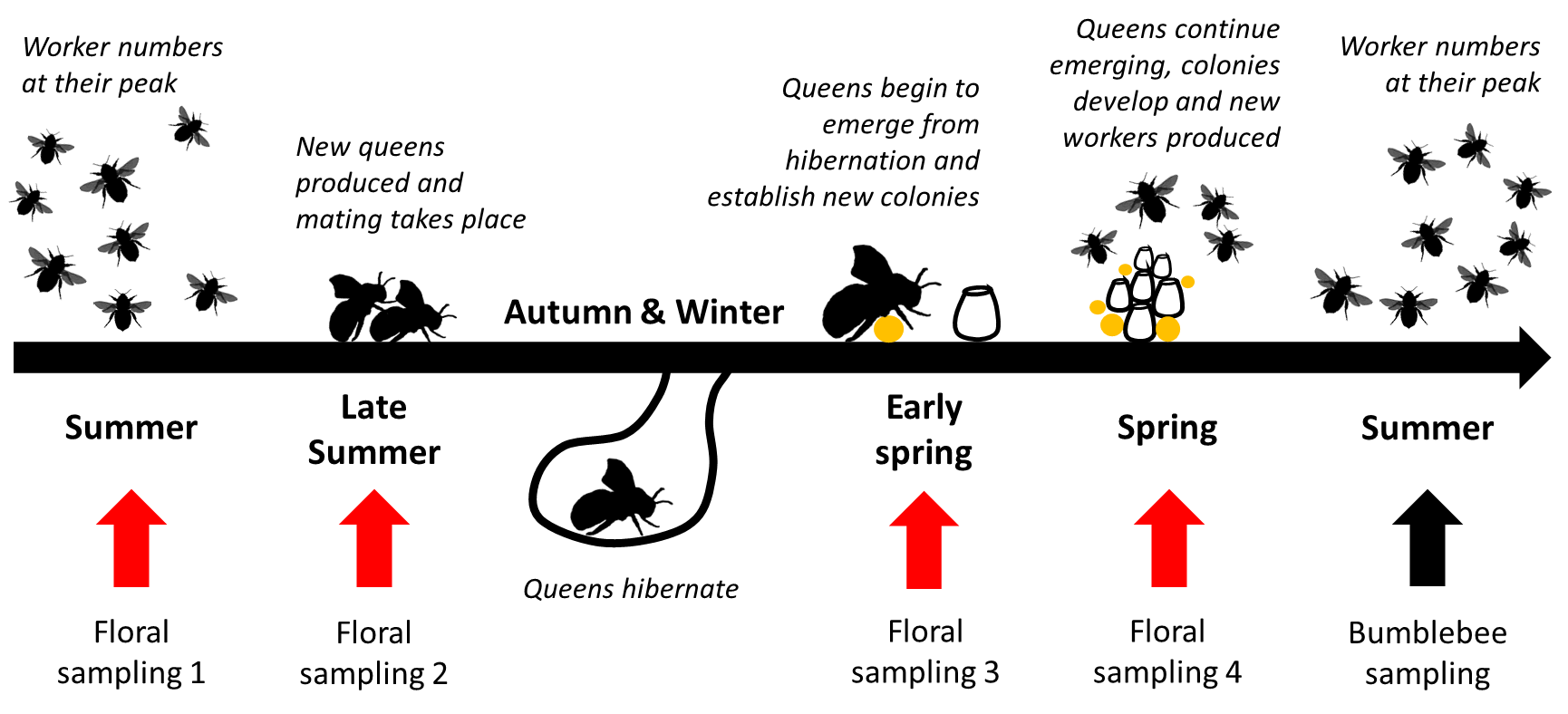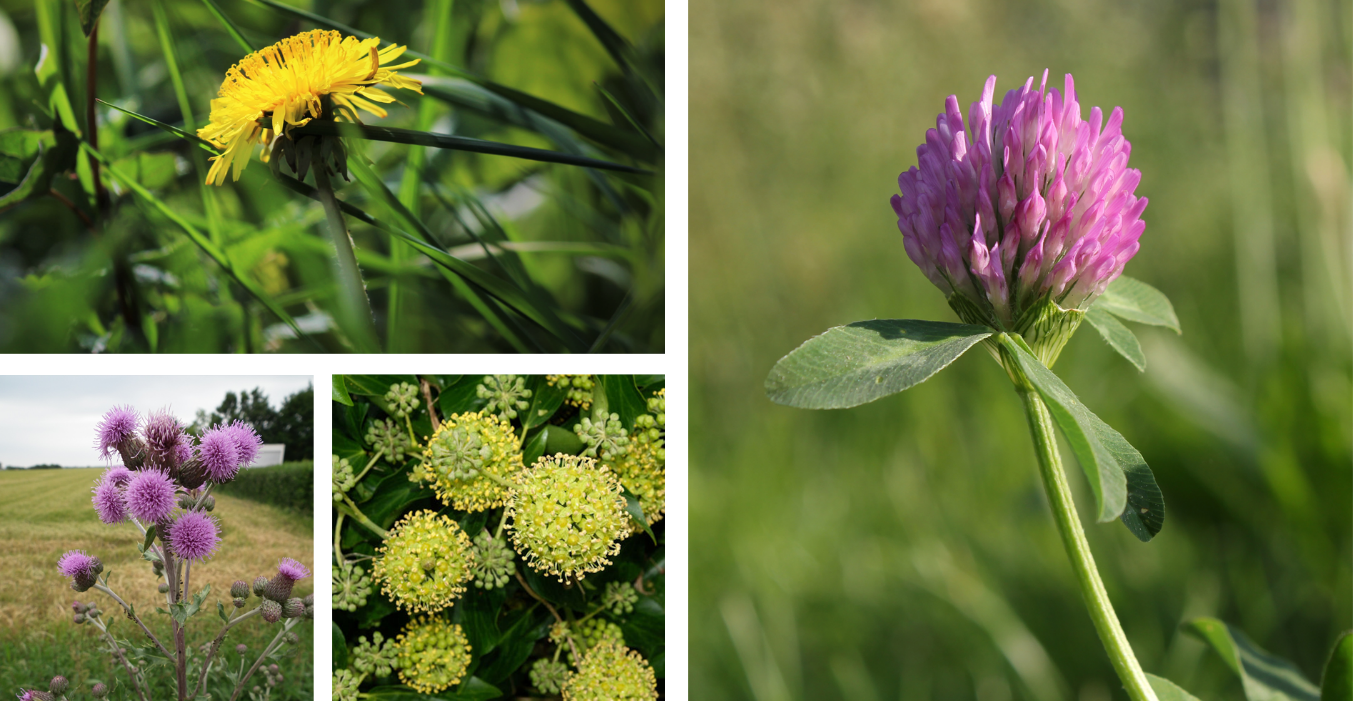A new study by Timberlake and colleagues finds that late summer nectar supply on farmland has an important influence on bumblebee colony density the following year – does this offer an opportunity to devise more targeted agri-environment schemes for pollinators?
Pollen and nectar are the primary food source for most adult pollinators, and in the case of bees, their larvae too. It is no surprise then that declining floral resources – particularly on farmland – are considered one of the most important drivers of pollinator decline.
Encouraging farmers to expand the area of semi-natural flowering habitat on their farms and maximise flower density may seem like a promising strategy for reversing pollinator declines. However, the story is not quite so simple.
Quantity isn’t everything
We showed in a previous study that that floral resource supplies on farmland vary dramatically through the year and do not align well with the energetic demands of bumblebees.
During some parts of the year (e.g., May and July) farmland provides more than enough resources for bumblebees, whilst at other times (e.g., March and September) the supply of resources may be insufficient. Perhaps then, it is not just about how much pollen and nectar is available, but also when these resources are available through the year.
When are bumblebees at their hungriest?
In this study, we investigated which periods of the year bumblebees were most strongly limited by their food supply and what could be done to reduce these bottlenecks.
On 12 different farms in the west of England we measured the supply of nectar and pollen available to pollinators in March, May, July and September – the four main flowering seasons of the year. We then recorded the density of Bombus terrestris nests on each using a molecular approach and investigated which seasons of food supply and which different habitat types were having the greatest influence on colony density.

Remarkably, nectar supply in September explained over half of the variation in colony density, though there was no association between colony density and floral resources in any other season. September is a period of low resource availability on farmland, coinciding with an important period in the bumblebee lifecycle when males and new queens are produced.
Our results suggest that queens may not be finding sufficient resources in the late summer as they prepare for hibernation, limiting their survival over winter and reducing colony density the following year

Gardens to the rescue
The coverage of semi-natural habitat on each farm was not associated with colony density, or even with the supply of floral resources, suggesting we cannot simply assume that more natural habitat will benefit pollinators. However, the coverage of gardens in the landscape was significantly associated with colony density, perhaps because of their far more consistent and diverse supply of floral resources.
As principal investigator, Professor Jane Memmott explains, “finding that these small rural gardens can have a measurable effect on bumblebee populations shows us that we really can make a difference for pollinators – even as individuals – by making sure our gardens are as pollinator-friendly as possible.”
Plugging the late summer hunger gap
To find out which management options could most effectively reduce the late-summer resource bottleneck and support bumblebee populations, we modelled the effect of different farmland management options on bumblebee colony density.
Increasing the area of semi-natural habitat had surprisingly little effect on colony density as the September floral resources were already so low in these habitats that increasing their area had little effect. Instead, raising the quality of these habitats and promoting late-flowering species such as ivy and thistles, or long-flowering species such as dandelions, had a much greater effect.
Environmental Stewardship Scheme pollen and nectar mixes were found to be beneficial, though were far more effective when mown early to extend flowering into September. Late-flowering cover crops such red clover were also effective at reducing the bottleneck, as suggested by previous studies.

Our study demonstrates the importance of considering the phenology of resources – not just total resource availability – when designing measures to support pollinators. By targeting these key ‘hunger gaps’ such as the late summer, and perhaps also the early spring, we may be able to support pollinators far more successfully and cost-effectively.
Read the full article, Bumblebee colony density on farmland is influenced by late‐summer nectar supply and garden cover, in Journal of Applied Ecology.

2 thoughts on “What limits bumblebee populations on farmland?”